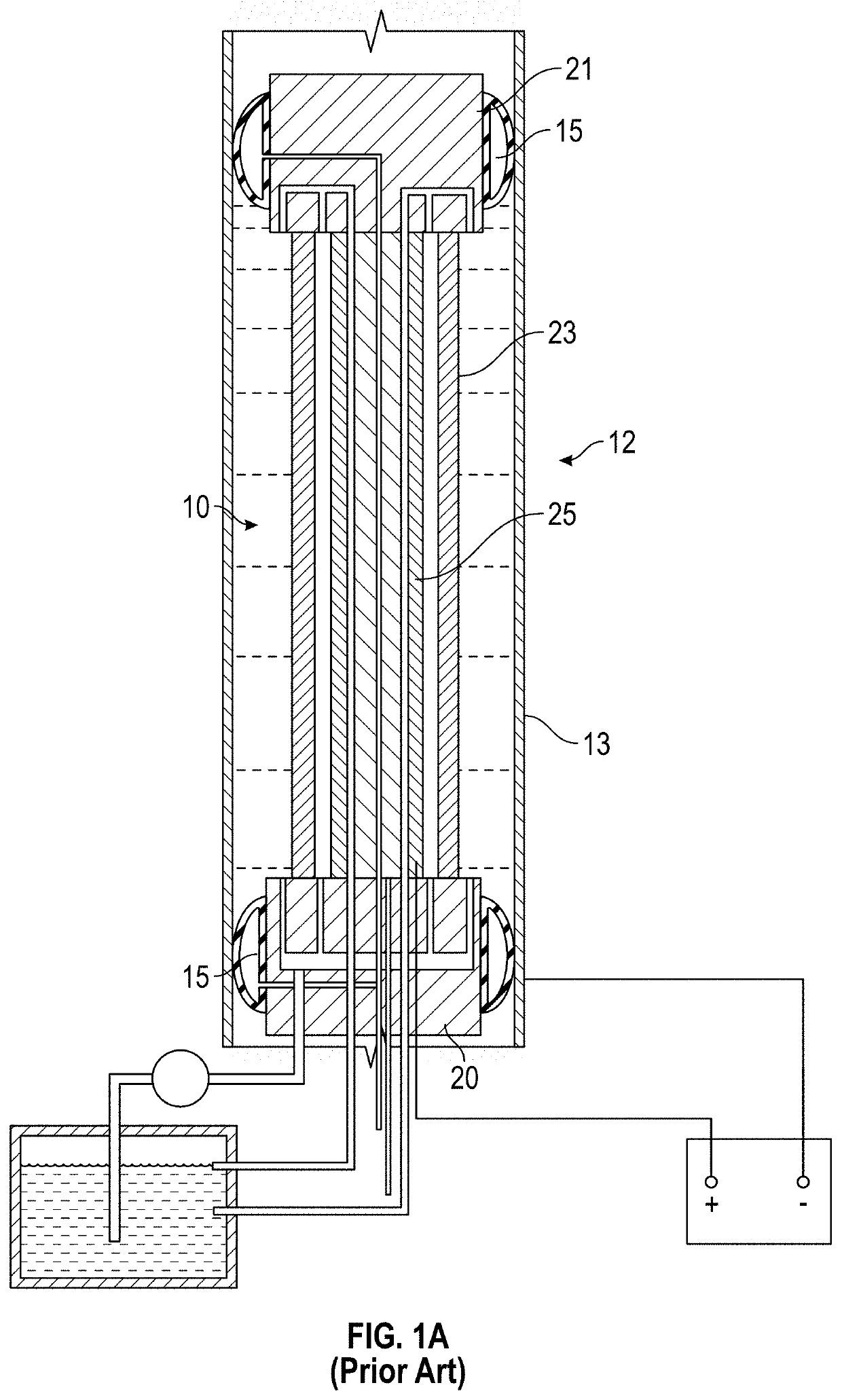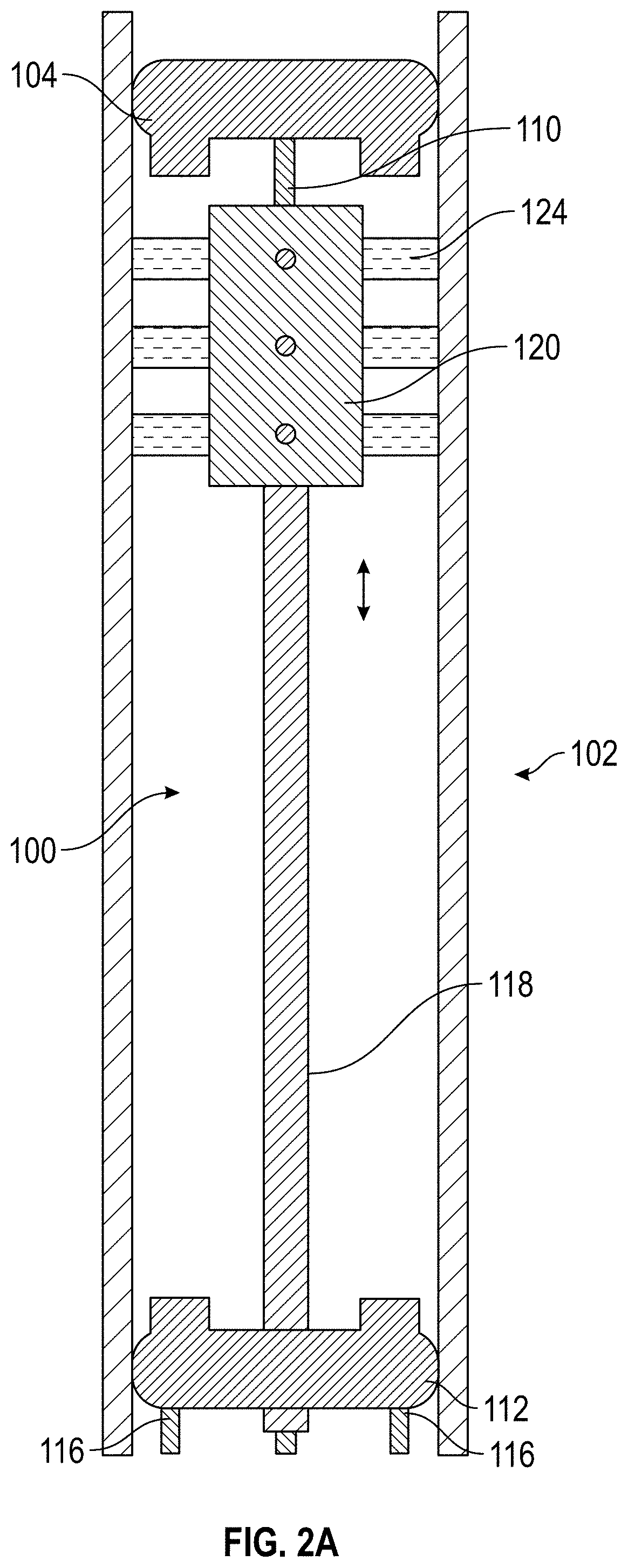Apparatus and method for in-situ electrosleeving and in-situ electropolishing internal walls of metallic conduits
a technology of electropolishing and conduit, which is applied in the direction of electrolysis process, electrolysis components, sealing devices, etc., can solve the problems of insufficient thin coatings inside the tubes, limitations, and inability to reestablish original mechanical properties, and achieve the effect of avoiding the disintegration of soluble/consumable anodes
- Summary
- Abstract
- Description
- Claims
- Application Information
AI Technical Summary
Benefits of technology
Problems solved by technology
Method used
Image
Examples
Embodiment Construction
[0103]The present disclosure relates to an electrolytic cell apparatus for use with several electrolytic processes which comprises the steps of: positioning a probe containing at least one non-conductive head cap, a non-conductive end cap and at least one non-conductive counter-electrode assembly into a hollow conduit, representing the workpiece to be processed; inflating all the terminal ends of the probe to seal off a compartment defined by the internal surface of the hollow conduit and the end and head caps of the probe; thereby creating a defined “electrolytic cell volume”; and by connecting the electrolytic cell to one or more external fluid reservoirs by means of a suitable fluid circulation system. A pump is used to circulate various fluids, including electrolyte into, into and out of the defined “electrolytic cell volume”. After cleaning and activating the workpiece surface with washing steps in between, electrical connections are made to the workpiece to be processed and to...
PUM
| Property | Measurement | Unit |
|---|---|---|
| inner diameter | aaaaa | aaaaa |
| inner diameter | aaaaa | aaaaa |
| inner diameter | aaaaa | aaaaa |
Abstract
Description
Claims
Application Information
 Login to View More
Login to View More - R&D
- Intellectual Property
- Life Sciences
- Materials
- Tech Scout
- Unparalleled Data Quality
- Higher Quality Content
- 60% Fewer Hallucinations
Browse by: Latest US Patents, China's latest patents, Technical Efficacy Thesaurus, Application Domain, Technology Topic, Popular Technical Reports.
© 2025 PatSnap. All rights reserved.Legal|Privacy policy|Modern Slavery Act Transparency Statement|Sitemap|About US| Contact US: help@patsnap.com



